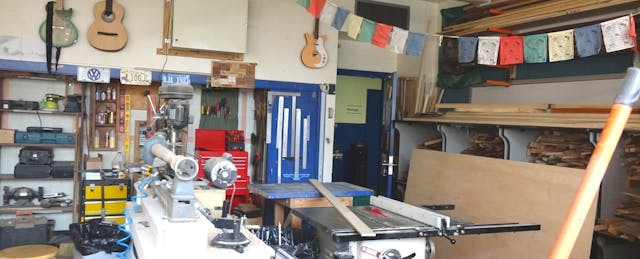Expanding Career and Technical Education programs (CTE) is one of the few legislative proposals that both Democrats and Republicans can get behind. Back in June, the House passed the Strengthening Career and Technical Education for the 21st Century Act to reauthorize funding for CTE programs (with 29 Republicans and 11 Democrats co-sponsoring the bill).
Though official numbers are not available yet, experts believe that such legislation, coupled with advocacy from tech giants and grassroots organizations, are laying the groundwork for great expansions in CTE. Today advanced programs are being set up in high schools and colleges, teaching high-demand technical skills such as drone piloting and game design.
However, not all CTE programs offer students skillsets that will give them a competitive edge in today’s job market. Some educators and researchers say that is problematic.
“CTE has to be industry- or business-driven,” says Donna Deeds, founder of Blue Valley Caps and Northland Prep High School in Kansas City, Mo. “In all of the programming that I have ever put together that is the most important piece, and it cannot be developed just by our educators internally. It is the number one thing, and it is the most missed if you look at programs across the nation.”
Deeds is known for her work creating schools with professional pathways in Kansas City. She has built two schools in the region and is now working as a consultant for the Kauffman Foundation researching CTE programs in her area. She notes that as an educator, it was not easy creating what she deemed a “high-quality” CTE program, but says it’s time educators recognized the purpose of CTE schools and build programs that help students find viable careers after graduation.
“We are not creating these programs just to create them. We are doing it to give kids a bridge from high school into their careers or into college and beyond,” says Deeds. “If that is not aligned with what the reality is, then it falls short. Kids get disappointed because the programs are out of date or not aligned with what is hot in the job market.”
Other researchers in the CTE field echo Deeds’ sentiments, noting that there is a significant difference between the quality of CTE programs. There is also a question of whether students from particularly demographics are funneled into lower-quality programs.
“In some of our school districts, there are CTE programs that are related to CAPs [Career and Professional studies programs]. The criticism is often that it is taking the cream of the crop; it is not democratized access,” says Sheri Gonzales Warren, the program director at the Mid-America Regional Council in Kansas City, Mo. “You are giving opportunities for something like an industry-recognized credential to someone who is already on track for a four-year college degree.”
Warren is currently undertaking a massive study on high school CTE programs in her region. She notes that there has been a significant spike of these offerings, but points to critics who say most of the high-quality ones go to schools and students that are already performing well. In response to these complaints, her organization is also researching the distribution of CTE program models in correlation to race and socioeconomic status. They expect to have results from the research this coming November.
“If students get into programs that are not challenging and don’t lead to postsecondary opportunities, that is a risk. That is the difference between a high-quality career and technical education and average programs,” says James R. Stone, director of the Research Center for Career & Technical Education in Atlanta, GA.
Stone, part of a group of CTE experts seeking to define high-quality programs, has worked with the Association for Career and Technical Education to create a framework for CTE programs that policymakers and educators can use. According to his work, the three components of a high-quality CTE offering include work-based learning in the form of internships or apprenticeships, student organizations and clubs that allow students to test their skills against peers, and an integrated, standards-aligned curriculum.
“I spent a year in a school with teachers and administrators looking at what they were doing,” says Stone. “The teachers were really hamstrung with district requirements and regulations regarding academics. They were particularly hamstrung with insufficient resources.”
Stone notes that the urban high school in New Jersey that he studied for a year (he did not want to disclose the school name) did not have the equipment, facilities or materials reflecting the technical or occupational demands and jobs the school hoped to prepare students for. And the program faced scheduling problems that inhibited students from building on their skills sequentially.
“There was a whole host of very localized issues that generated challenges to those programs, and if you looked at the outcomes, I would argue that they weren’t very good,” says Stone.
For teachers trying to bring CTE programs into their schools, the line between high-quality and low-quality programs is not so black and white. John Harrison, a teacher at Inwood Leadership Academy (a charter high school in New York City), started a woodshop program last year in his school to offer students, who didn’t seem bent on going to college, alternative career pathways. However, with no active business partnerships and limited money from the school, their program is severely underfunded and underdeveloped.

“You want to know how I fund this program? I just pay for it,” says Harrison. “Our school has no money, so they gave me a modest budget. To get the woodshop running, I wrote a few grants and got a few thousand dollars, but basically, all the tools were mine. Most of the other materials I supply myself, or I found in the garbage.”
Harrison hopes that students who graduate after taking his class will have skills in carpentry and geometry. He also wants to help them sell their work (handmade guitars and furniture) to add some entrepreneurship experience to their craft. But without money for curriculum support and materials, his dream woodshop course isn’t where he wants it to be.

“Right now we are taking this step by step,” says David Boehm, the director of technology at Inwood Leadership Academy. “I know John has a lot of dreams and ideas that we want to do, and we are looking for ways to increase the level of funding to support John, and identify some curriculum to support those programs.”
Deeds says teachers like Harrison, though passionate about their work, need to make some changes. She reiterates that Harrison needs support from local industry partners to transform his traditional woodworking class into a course that can connect students to job opportunities.
“Woodworking is not a high-skills, high-demand job. It’s not a bad job, but we are trying to put kids in an environment that they will be able to [earn] livable wages,” says Deeds. “He has to see what skills he is using right now, like milling and metal fabrication, which are all skill sets in the advanced manufacturing world, in the robotic welding world and other high-demand fields. Then, with an industry partner, his class can be expanded into a futuristic, high-tech CTE program.”


